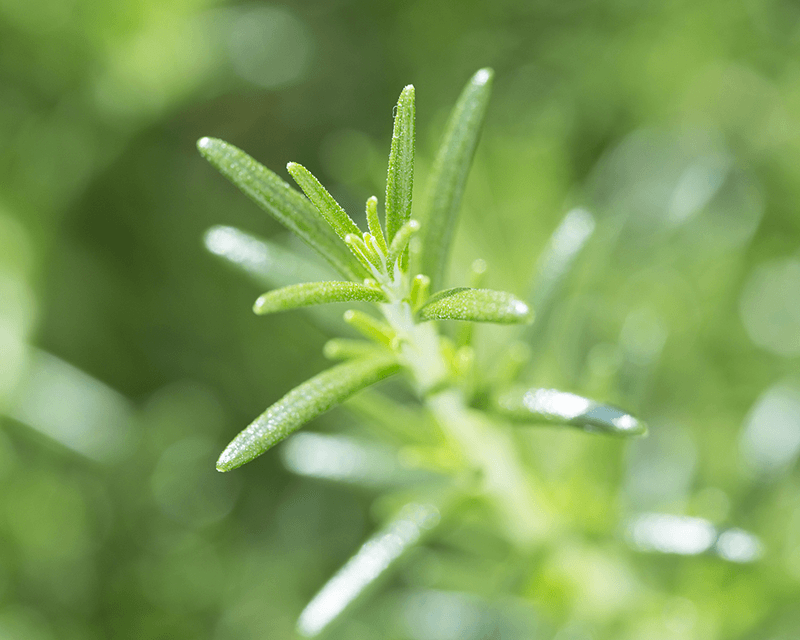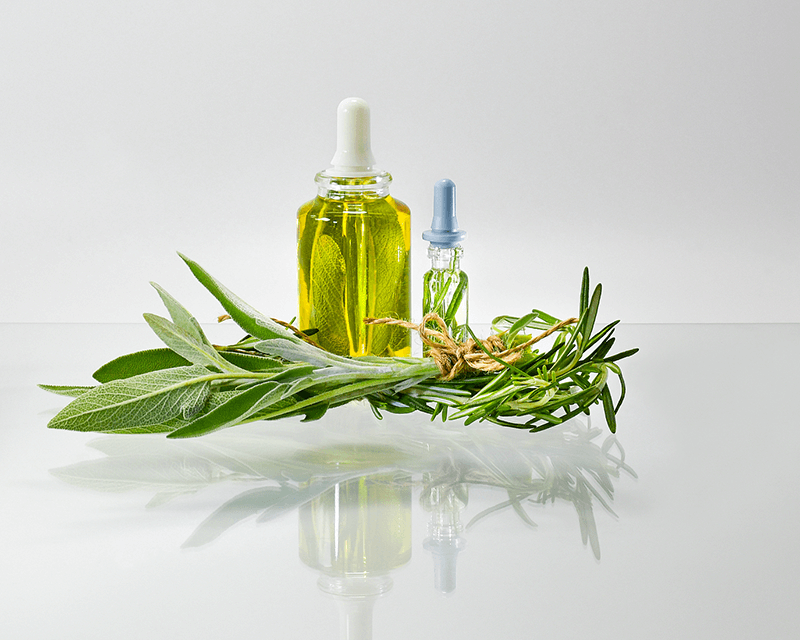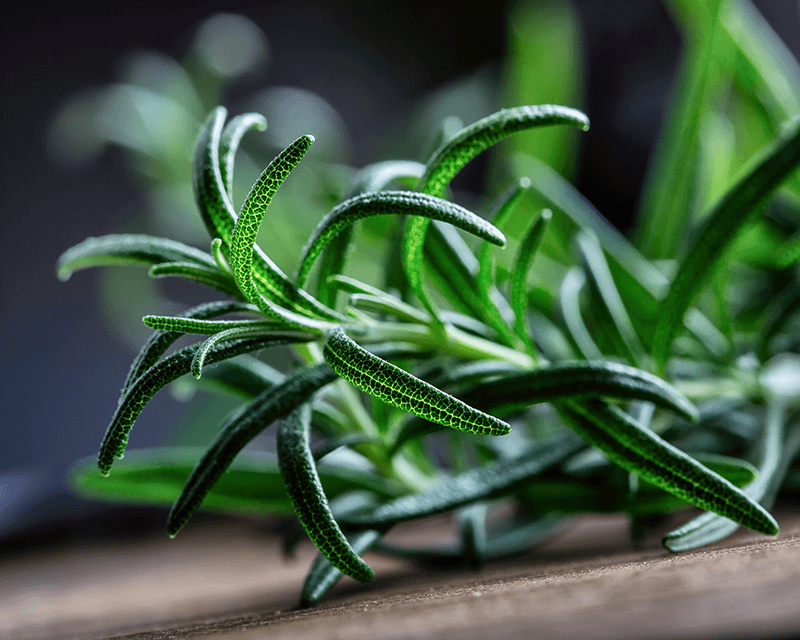Introduction:
In recent years, there has been a growing interest in natural compounds and their potential health benefits. One such compound that has gained attention is rosmarinic acid, commonly found in rosemary. This blogger aims to take you on a journey through the source and extraction process of rosmarinic acid, revealing the intriguing story behind this remarkable compound.
Section 1: Understanding Rosemary
Rosemary is a fascinating herb with a rich history and a wide range of uses. In this section, we will explore the origins of rosemary, its versatile nature, and the chemistry behind its beneficial properties. Let's dive in!
1.1 The Origins of Rosemary:
a. Historical Significance of Rosemary:
Rosemary has a long and storied history that dates back to ancient civilizations. It holds significance in various cultures and has been used for a multitude of purposes.
Ancient civilizations and the use of rosemary:
Rosemary was highly regarded by ancient civilizations such as the Egyptians, Greeks, and Romans. It was often used in religious ceremonies, as a symbol of protection, and as a fragrant adornment in both personal and sacred spaces.
Symbolic and medicinal importance:
Rosemary was believed to have properties that could ward off evil spirits and promote good luck. In addition to its symbolic importance, rosemary also found its place as a medicinal herb, with uses ranging from digestive remedies to memory enhancement.
b. Rosemary as a Versatile Herb:
Rosemary's versatility extends beyond its historical significance. This herb has found its way into various culinary and medicinal applications throughout the ages.
Culinary applications:
Rosemary's distinct aroma and flavor make it a popular choice in the kitchen. It is often used to enhance the taste of savory dishes, ranging from roasted meats and vegetables to soups and sauces. Its versatility allows it to be used fresh, dried, or as an infused oil.
Traditional medicinal uses:
Rosemary has been a staple in traditional medicine systems for centuries. It has been used to alleviate symptoms of indigestion, headaches, inflammation, and respiratory conditions. Additionally, rosemary has been valued as an aromatic herb in aromatherapy, believed to have mood-boosting and stress-relieving properties.
1.2 Exploring the Chemistry of Rosemary:
a. Bioactive Compounds:
Rosemary owes its impressive array of benefits to its complex composition of bioactive compounds. One standout compound found in rosemary is rosmarinic acid.
Rosmarinic acid as a standout compound: Rosmarinic acid is a polyphenol that has garnered significant attention due to its potential health-promoting properties. It is known for its antioxidant activity and has been studied for its anti-inflammatory, antimicrobial, and anticancer effects.
Other notable compounds in rosemary: Rosemary also contains other compounds that contribute to its overall chemistry and health benefits. These include carnosic acid, caffeic acid, camphor, and α-pinene, among others.
b. Health Benefits:
The bioactive compounds present in rosemary contribute to its various health benefits, making it a valuable herb for overall well-being.
Antioxidant properties and free radical scavenging:
Rosemary's rich antioxidant content, primarily attributed to rosmarinic acid, aids in neutralizing harmful free radicals in the body. This antioxidant activity supports cellular health and may help protect against oxidative stress-related damage.
Anti-inflammatory effects:
The anti-inflammatory properties of rosemary's bioactive compounds, including rosmarinic acid, may contribute to reducing inflammation in the body. Chronic inflammation is associated with various diseases, and rosemary's anti-inflammatory effects have shown potential in alleviating symptoms and promoting overall health.
Neuroprotective potential:
Studies suggest that rosemary, particularly its bioactive constituents like rosmarinic acid, may have neuroprotective effects. These effects include potential memory enhancement and protection against neurodegenerative diseases like Alzheimer's and Parkinson's.
In conclusion, rosemary is an herb with a rich history, versatile applications, and a complex chemical composition. Its bioactive compounds, especially rosmarinic acid, contribute to its antioxidant, anti-inflammatory, and potentially neuroprotective properties. This understanding of rosemary lays the foundation for exploring the extraction process of rosmarinic acid, which will be discussed in the subsequent sections. Stay tuned!
Section 2: The Extraction Process
Welcome back! In this section, we will delve into the intricate process of extracting rosmarinic acid from rosemary. From selecting the ideal plant material to ensuring quality control, we'll cover it all. Let's get started!
2.1 Selecting the Ideal Plant Material:
a. Cultivation Methods:
Rosemary is a versatile herb that can be grown in different regions. Various factors, such as climate, soil type, and cultivation practices, can influence the chemical composition of rosemary leaves. Careful consideration is given to choosing the optimal growing conditions to achieve high-quality plant material.
b. Harvesting Strategies:
To obtain the purest and highest quality rosemary plant material, it is essential to harvest at the right time and use suitable techniques.
Optimal time for harvesting rosemary:
Rosemary leaves contain the highest concentration of rosmarinic acid just before flowering. Harvesting during this stage ensures a potent extract.
Techniques for preserving purity and quality: Both hand-picking and mechanized methods can be used for harvesting rosemary. However, it is crucial to handle the leaves with care to minimize damage and preserve the integrity of the plant material.
2.2 Extraction Techniques:
a. Traditional Extraction Methods:
Traditional methods have been used for centuries to extract essential oils and bioactive compounds from plants. Two commonly employed traditional extraction techniques for rosemary are steam distillation and cold pressing.
(1) Steam distillation:
A process that involves passing steam through rosemary leaves, extracting the volatile compounds and essential oils. This method efficiently separates the desired compounds from the plant material.
(2) Cold pressing:
This method involves mechanically extracting oils and compounds from rosemary without the use of heat. Cold pressing retains the natural properties and integrity of the plant material.
b. Modern Techniques:
With advancements in technology, modern extraction techniques have emerged as effective methods for obtaining rosmarinic acid from rosemary.
(1) Supercritical fluid extraction (SFE):
In this technique, supercritical fluids, such as carbon dioxide, are used as solvents. The fluid is able to penetrate the plant material, extracting rosmarinic acid and other compounds effectively. SFE is known for its ability to produce high-quality extracts.
(2) Solvent extraction:
Solvents like ethanol or methanol can be used to dissolve the desired compounds from rosemary leaves. This extraction method is commonly employed when dealing with large volumes of plant material.
c. Analytical Techniques:
To ensure the quality and potency of the rosemary extract, various analytical techniques are employed.
High-performance liquid chromatography (HPLC):
This technique is used to analyze and quantify the concentration of rosmarinic acid and other compounds in the extract. HPLC provides accurate results, allowing for quality control and standardization.
Gas chromatography-mass spectrometry (GC-MS):
GC-MS is another powerful analytical technique used to identify and quantify the compounds present in the extract. This method facilitates the comprehensive analysis of the chemical composition of the extract.
2.3 Purification and Isolation:
a. Filtration:
Once the extract is obtained, filtration is employed to remove impurities. This step ensures a clean and pure extract with minimal contaminants.
b. Evaporation:
The next step is the evaporation process, which involves removing the solvent from the extract. This concentration step helps achieve a potent and concentrated rosmarinic acid extract.
c. Crystallization:
Crystallization is employed to separate rosmarinic acid from other compounds present in the extract. By carefully controlling conditions such as temperature and concentration, rosmarinic acid can be isolated and obtained in its pure form.
2.4 Quality Control and Standardization:
a. Assessing the Purity and Potency:
To ensure the extract meets the desired quality standards, the concentration of rosmarinic acid is determined through various analytical techniques. The results enable manufacturers to assess the purity and potency of the extract.
b. Regulatory Guidelines:
There are current regulations and certifications in place to ensure the safety and quality of herbal extracts. Compliance with these regulations is crucial in maintaining the integrity of the extract and ensuring consumer safety.
c. Storage and Shelf Life:
Proper storage conditions play a vital role in preserving the stability and efficacy of the extract. Storage in a cool, dry place away from direct sunlight and moisture helps maintain the extract's quality and extends its shelf life.
Conclusion:
The extraction process is a meticulous journey that transforms rosemary into the valuable rosmarinic acid extract. Choosing the ideal plant material, employing extraction techniques, and ensuring quality control are all essential steps in obtaining a high-quality extract. By understanding this process, we can appreciate the effort and precision involved in bringing us the beneficial properties of rosemary. Stay tuned for the next section as we explore the potential health benefits of rosmarinic acid!
Conclusion:
From its ancient origins to modern extraction techniques, the journey from rosemary to rosmarinic acid is a fascinating one. With its numerous health benefits and versatility, rosmarinic acid has captured the attention of researchers and consumers alike. By understanding the source and extraction process of this compound, we can better appreciate its value and make informed choices when seeking its benefits. So, the next time you encounter rosemary, remember the hidden potential it holds within its leaves.
Contact Us:
Grace HU (Marketing Manager)
grace@biowaycn.com
Carl Cheng ( CEO/Boss )
ceo@biowaycn.com
www.biowaynutrition.com
Post time: Oct-17-2023








